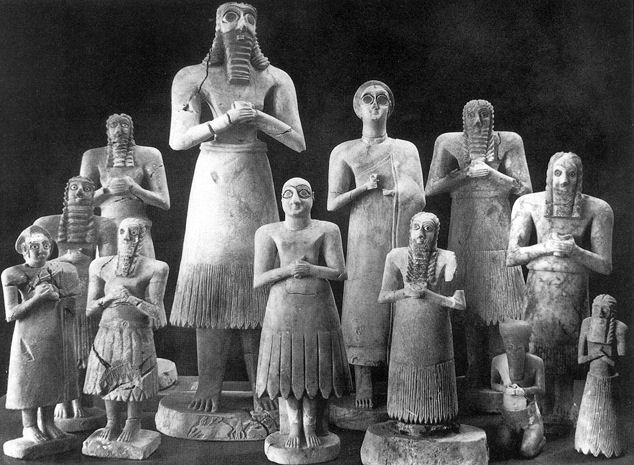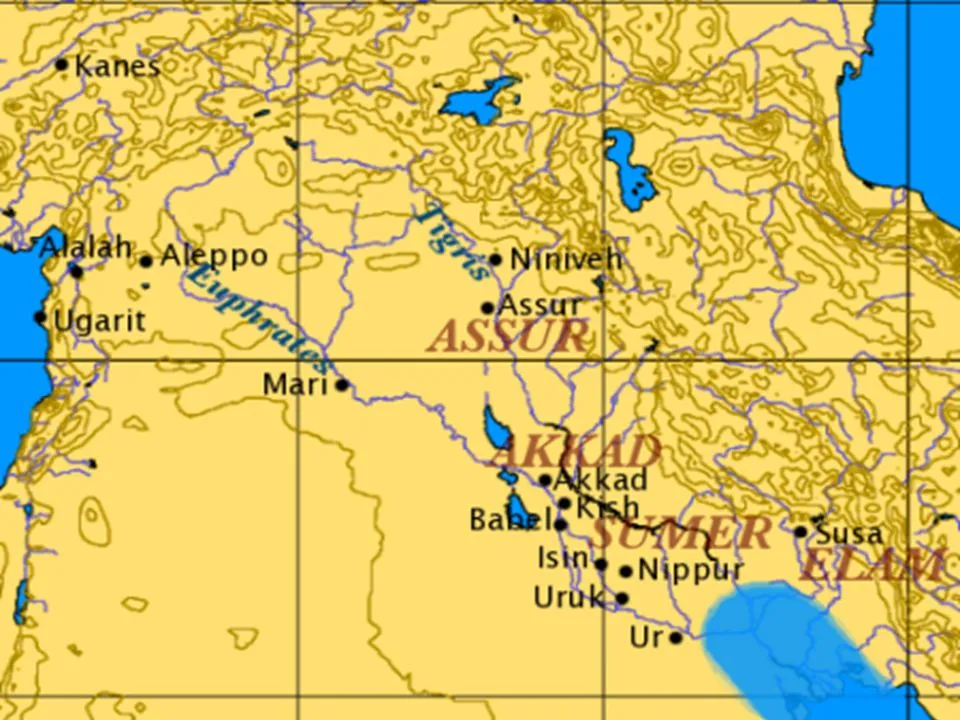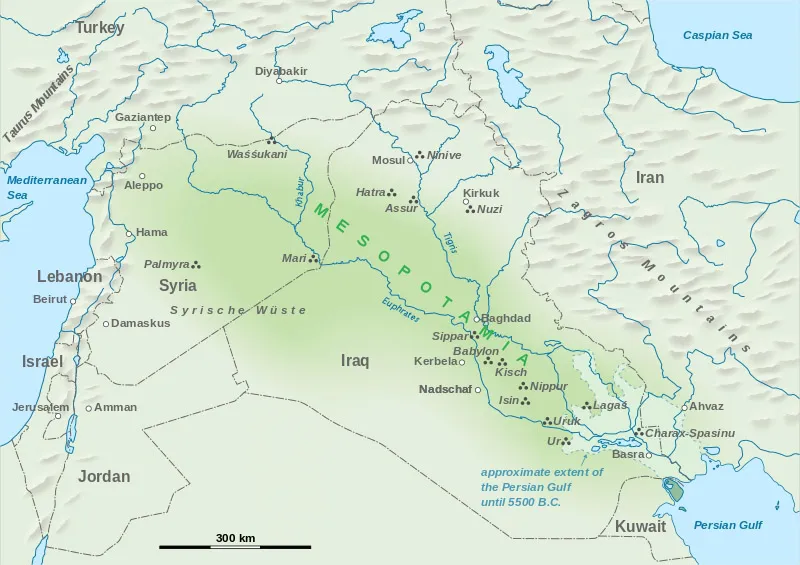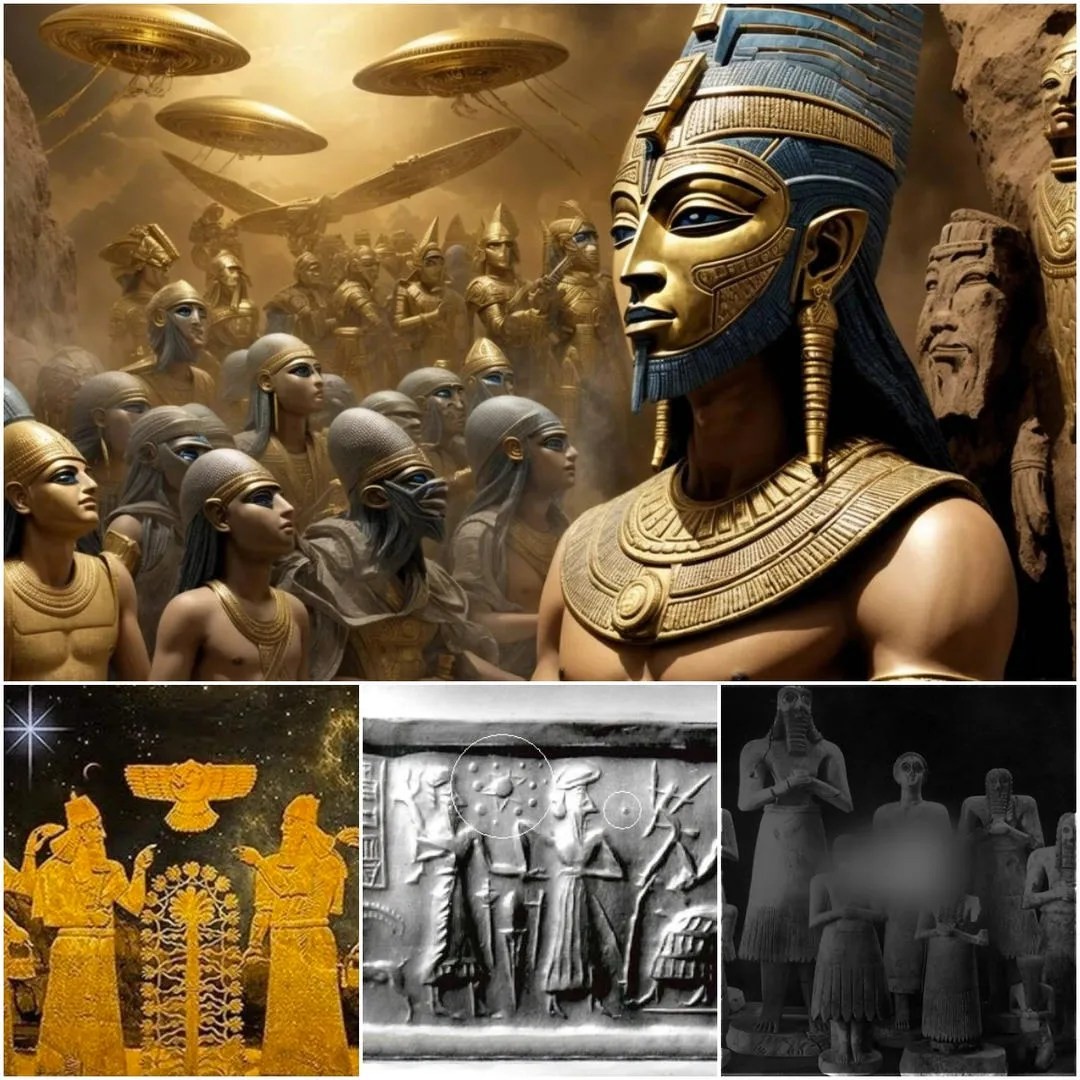Sumer’s Star Knowledge: Did It Come from Beyond Earth?
In 4000 BC, after the agricultural revolution spread from the northern edge of the Fertile Crescent, Stone Age farmers began farming, forming humanity’s first civilization.

Sumer was an ancient civilization and also a historical region in southern Mesopotamia, which is present-day Iraq. (Photo: Wikipedia)
Although rainfall in this vast plain is insufficient to support agriculture, the eastern region is watered by the Tigris and Euphrates rivers. Babylon is a famous city-state of ancient Mesopotamia (Greek for “land between rivers”), located on the downriver plain where two rivers almost converge. Babylon, in turn, expanded into two areas: Akkad in the north and Sumeria, the delta of this river system in the south.
The period between 3500 and 3100 BC laid the foundations for a markedly different kind of economic and social order than anything known before. This extremely complex culture, based on urban centres, not small village units, is also what makes us think of the existence of a civilisation.

Babylon, in turn, expanded into two areas: Akkad in the north and Sumer, the delta of the Tigris and Euphrates river systems in the south. (Photo: Wikipedia)
The word Mesopotamia, although literally meaning “land between rivers,” is often used to refer to all the land between the Tigris and Euphrates rivers and on either side of them.
By 3100 BC, the population of Sumer had grown to match the number of people living in the cities, even surpassing the norm for the civilization. The earliest evidence includes writings that appeared in the earliest stages of Sumerian civilization, up to about 28 BC, also known as the proto-literate period.
All Sumerian cities worshipped several gods, including Anu, the god of the sky, Enlil, lord of the spirit world, and Ishtar, the god of Venus, the morning star (east) and the evening star (west).

Statues of some of the gods worshipped by the Sumerians. (Photo: Pinterest)
By the 23rd century BC, Sumerian power had weakened to the point that they could not defend themselves against foreign invaders. The Semitic ruler was the great Sargon I (reigned c. 2335–2279 BC), who successfully conquered the entire kingdom. Sargon founded a new capital, Agade, at the northern tip of Sumer, and built it into the richest and most powerful city in the world. The people of northern Sumer and the invaders gradually merged ethnically and linguistically to create the Akkadian population. The land of New Sumer was a harmony between ancient Sumer and Akkad.
The Sumerian culture in 4000 BC is the oldest culture on Earth. Even today we still use the same mathematical, calendar and time systems as they did.
The Sumerians were able to measure the distances between stars very accurately. Ancient Sumerian texts point to a large planet crashing into Earth (“Tiamat”) causing our Earth to move into its present orbit and forming the Moon and the asteroid belt. In his book The Twelfth Planet and the Cosmic Code, Zecharia Sitchin describes the “battle of heaven,” which in Babylonian was Enuma elish. The planet, called “Marduk” (according to the Sumerians “Nibiru”), entered the solar system following a clockwise ellipse, crashing into the planet Tiamat, which was moving in the opposite orbit.

Illustration of the orbit of the planet “Marduk” (according to the Sumerians “Nibiru”), entering the solar system in an elliptical clockwise direction. (Photo: Pinterest)
The Sumerians said that they inherited their knowledge from the gods, who were beings who descended to Earth.
According to Zecharia Sitchin, the Sumerians had a deep astronomical knowledge about the planets of our solar system. According to the Sumerians, they received this knowledge from a race of extraterrestrials called the Anunnaki (in Sumerian texts, they were “sky men”; the Egyptians referred to the Neter, an ancient civilization originating from the tenth planet of our solar system) who is a god in Sumerian-Mesopotamian mythology.
In the upper left corner of a bas-relief, Sitchin argues, the Sun is seen orbited by 11 other spheres. Since the ancients (including the Sumerians) believed that the Sun and Moon were “planets,” 11 spheres plus the Sun would make 12 planets. Another passage in this book also claims that the Sumerians knew of a planet beyond Pluto.
In the upper left corner of a bas-relief, the Sun is seen orbited by 11 other spheres and an extrasolar planet known as “Nibiru.” (Photo: Pinterest)

This additional planet was considered Nibiru by Sitchin, a celestial body mentioned in Mesopotamian texts. According to the details given by Sitchin, every 3600 years Nibiru will pass by our solar system, so some people believe in Sitchin’s theory that Nibiru will return soon, and this planet also has another name – “Planet X”.






